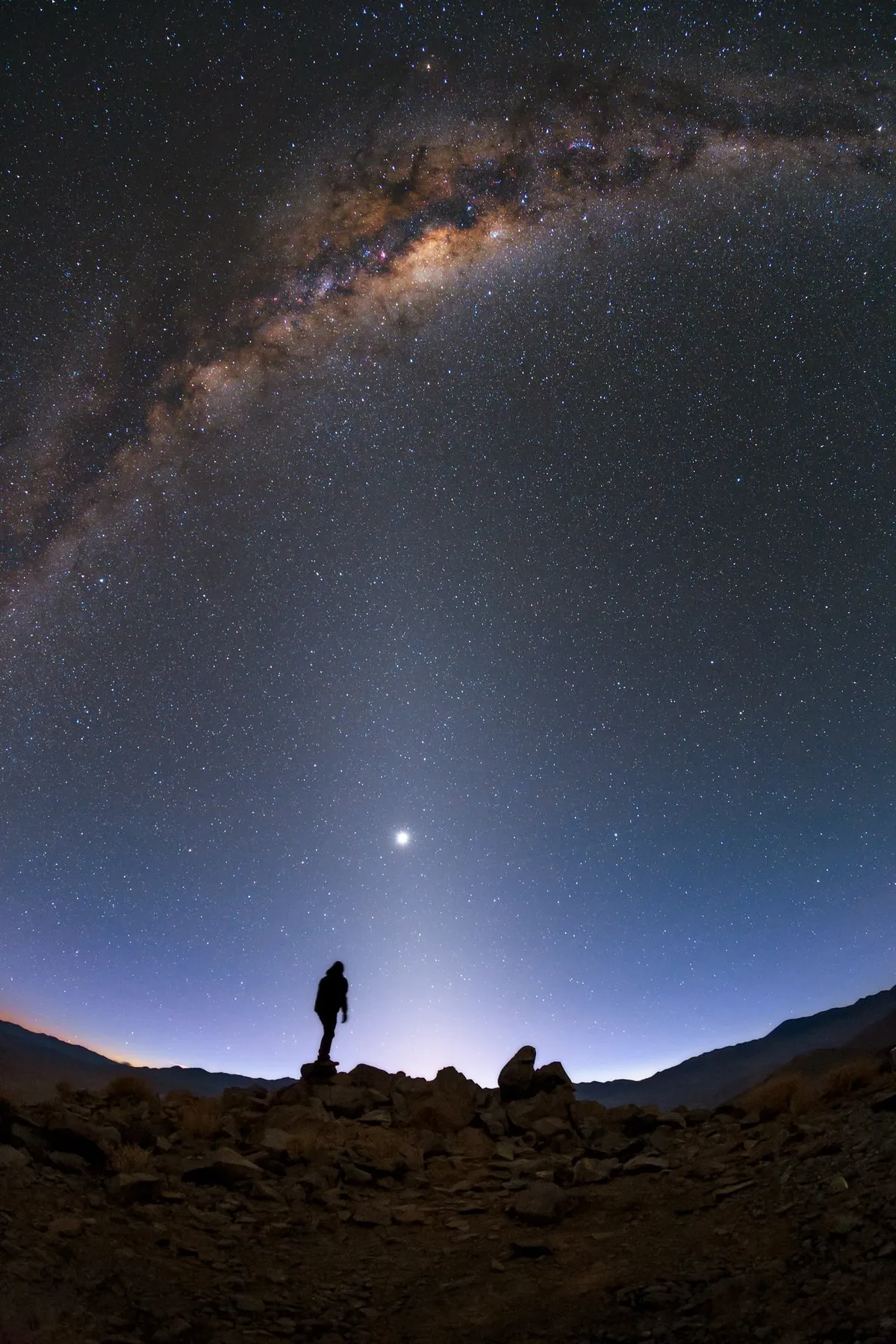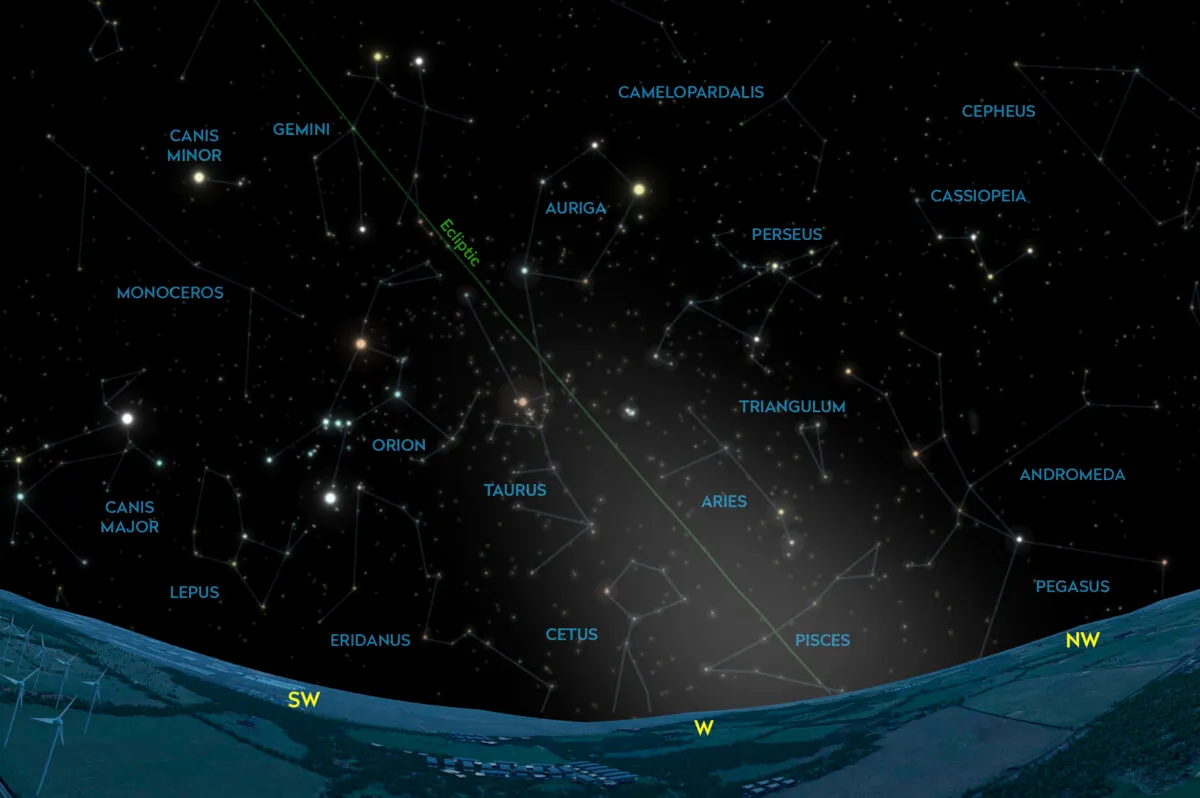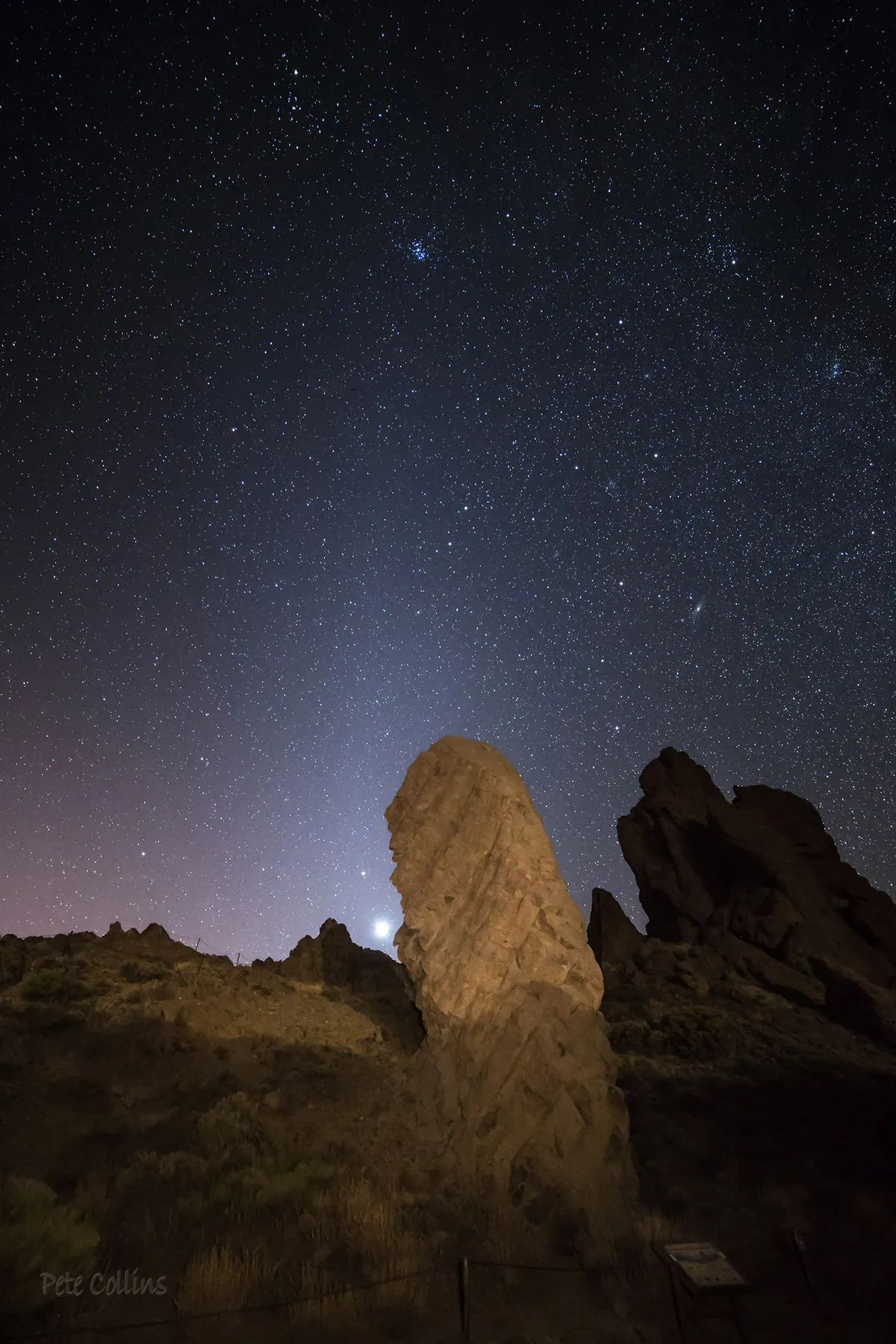The origin of the Zodiacal Light is thought to be from short-period ‘Jupiter-family’ comets. The tiny particles of comet dust released from these objects orbit in the plane of the Solar System.
When sunlight interacts with the 10–300-micron-sized particles, from Earth we sometimes see the Zodiacal Light after sunset or before sunrise.
A high ecliptic angle with the prevailing horizon is preferable for spotting the Zodiacal Light, and during March that ecliptic angle is optimal after the Sun has set, when it’s the western horizon that is important.
Conversely, for pre-dawn appearances the optimal place and time is the eastern horizon around late September.

In order to see the ghostly glow known as Zodiacal Light, there are several factors that need to align.
Dark skies are a must. If you live in an area that suffers from light pollution, as most of us sadly do, you may need to travel elsewhere.
Natural light pollution should be avoided too, so time any attempts for when the Moon is out of the way (get Moon phases delivered to your inbox by signing up to the BBC Sky at Night Magazine e-newsletter)
In the spring this will typically be when it’s in the waning gibbous Moon phase through to the very earliest of the waxing crescent Moons.
For the next period, the optimal date ranges are 12–23 March and 9–22 April.
The weather needs to be good too, with a clear, crisp spring sky. High, hazy cloud will act as a perfect filter for the Zodiacal Light, so watch out for this too.

What does Zodiacal Light look like?
When visible, the Zodiacal Light presents itself with a distinctive conic shape.
The cone’s vertical axis is tilted relative to the horizon, running along the ecliptic with the lower edges of the cone bulging outward.
The best time to try to see the Zodiacal Light is during the 90-minute window that starts 90 minutes after sunset.
For a directional guide, follow the line of the planets, as this will define the line of the ecliptic for you. In March, look west for a hazy conical glow around the ecliptic from 90 minutes after sunset.

If you fail to see the Zodiacal Light visually, a wide-angle camera pointed in the directions mentioned above at the correct times may fare better.
The camera should be set to produce a relatively deep but not overexposed sky, and doesn’t need to track, a fixed tripod being fine.
A time-lapse sequence can be useful here because it can be played back to show whether the characteristic Zodiacal
Light shape was really present, even if you couldn’t see it visually.
Don’t forget to let us know if you do manage to see or photograph the Zodiacal Light. You can get in touch by emailing us at contactus@skyatnightmagazine.com.
This guide originally appeared in the March 2023 issue of BBC Sky at Night Magazine.

